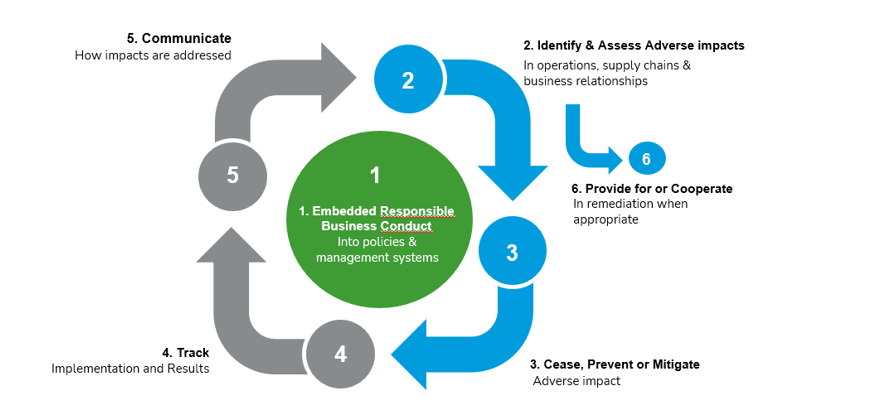The CSDDD seemed to be heading for full approval from Brussels. Unfortunately, we will have to wait a little longer. The status of the CSDDD is that provisional political agreement has been reached by the Council and the European Parliament in December. The following step is to achieve final approval in the Council, but this has been delayed for the moment as per February 28, 2024. We wrote earlier about connecting the dots between the CSRD and the CSDDD. Companies that thought they were set by just complying with the CSRD are now in for a rude awakening. In this article, as part of a series, we will briefly discuss the supply chain implications of this Directive.
This article is written by Gidion Lont ([email protected]) and Cem Adiyaman ([email protected]). Gidion and Cem are both part of RSM Netherlands Business Consulting Services with a specific focus on Sustainability and Supply Chain Management.
Scope of the CSDDD
The CSDDD will be applicable to three groups of companies. First, larger EU-based enterprises or parent companies with a workforce exceeding 500 employees and a global revenue surpassing € 150 million. Second, EU companies with a minimum of 250 employees and a net turnover exceeding € 40 million will also fall under the purview of the CSDDD, provided they earn at least € 20 million in sectors considered to be high-risk. These sectors include the manufacturing and wholesale of textiles, garments, and footwear, agricultural activities along with forestry and fisheries, the food production and wholesale sector, and the mining and wholesale of mineral resources. Three years after the CSDDD comes into force, it will apply to non-EU (parent)companies generating over € 300 million in the EU. Finally, the CSDDD also applies to the financial sector, but is limited to a firm’s own activities and their upstream supply chain.
The directive introduces potential legal and financial risks for non-compliance, including civil liability and fines of up to 5% of worldwide turnover. Companies will need to invest in robust due diligence processes to identify, prevent, and mitigate risks in their supply chains to avoid potential legal action and financial penalties.
The CSDDD imposes due diligence regarding adverse impacts on human rights and environmental impacts such as pollution of soil, water and air, greenhouse gas emissions, or excessive use of water. The directive provides a five-year window for affected parties, including trade unions and NGOs, to file claims related to adverse impacts. It also includes provisions for injunctive relief and legal support to facilitate effective enforcement. The due diligence obligations will not extend solely to a company’s own business operations and its suppliers (upstream) but will also include activities undertaken after production (downstream), such as warehousing, distribution and recycling. This comprehensive approach is designed to ensure that companies take responsibility for their entire value chain, from the extraction of raw materials to the end of the product's life cycle. This broad scope aims to foster greater transparency, sustainability, and responsibility in global supply chains, ultimately contributing to the protection of human rights and the environment.
Impact on supply chains
The Directive is expected to have significant effects on the supply chains of companies that fall within its scope, while indirect supply chain effect are to be expected. This impact will be multifaceted, affecting various aspects of operations, relationships with suppliers and subcontractors, and overall business strategies.
Companies will need to ensure greater transparency in their supply chains, requiring detailed knowledge of where and how their products are made. This could lead to more rigorous supplier assessments and audits to ensure compliance with human rights and environmental standards. Companies will have to publicly report their due diligence processes, findings, and actions taken to mitigate adverse impacts.
To comply with the CSDDD, companies will need to engage more closely with their suppliers to ensure that they meet the required standards. This may involve providing support and training to suppliers to help them improve their practices and is expected to strengthen the trend towards supply chain collaboration for sustainability purposes. It could lead to a shift in how companies select and manage their supplier relationships, favoring those who demonstrate strong sustainability practices. As a result, companies may need to rethink their business models and strategies to align with sustainability goals. This could involve redesigning products to be more sustainable, investing in renewable energy, or adopting circular economy principles to minimize waste. Companies will need to integrate sustainability into the core of their business decision-making processes.
Forward Thinking
For many companies, the CSRD can, or should be considered the starting point of a transition towards a more sustainable and responsible business model and supply chain.

The CSRD and CSDDD partially overlap and when merged form a complete ESG due diligence process. Whereas the CSRD is a transparency obligation only without any obligation to address identified impacts or risks, the CSDD is a ‘best-efforts’ obligation adding obligations to cease, prevent and mitigate adverse effects on human rights and the environment. Therefore, one directive cannot be separated from the other but should rather be seen as an integrated whole. Therefore, it is not only important for companies to provide transparency, but they should also consider that they must act upon the (potential) impact they have or will have in the future. Developing an effective framework to identify and assess adverse impacts in their operations therefore provides a solid foundation to build upon for future CSDDD compliance.
RSM is Thought Leader in the field of Supply Chain and Sustainability consulting. We offer frequent insights through training and sharing of thought leadership that is based on a detailed knowledge of regulatory obligations and practical applications in working with our customers. If you want to know more, please reach out to one of our consultants.

